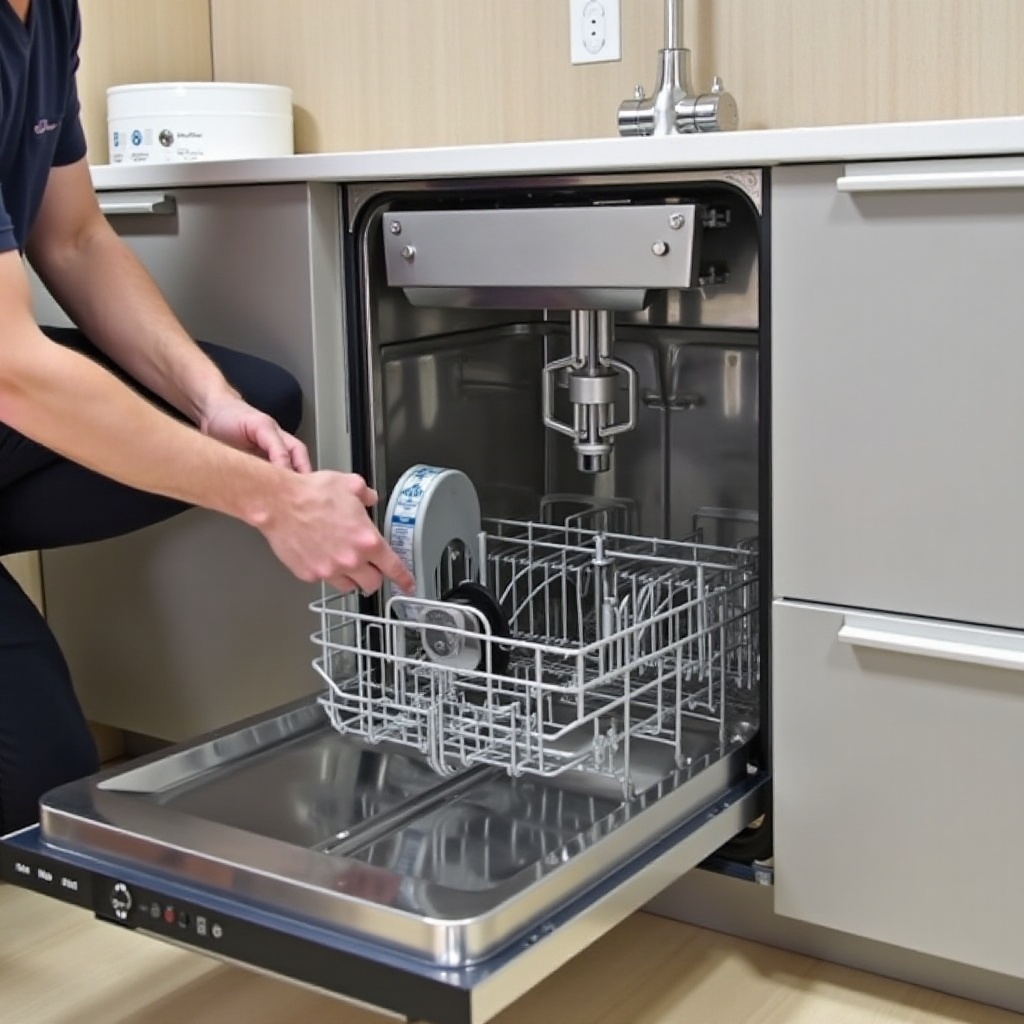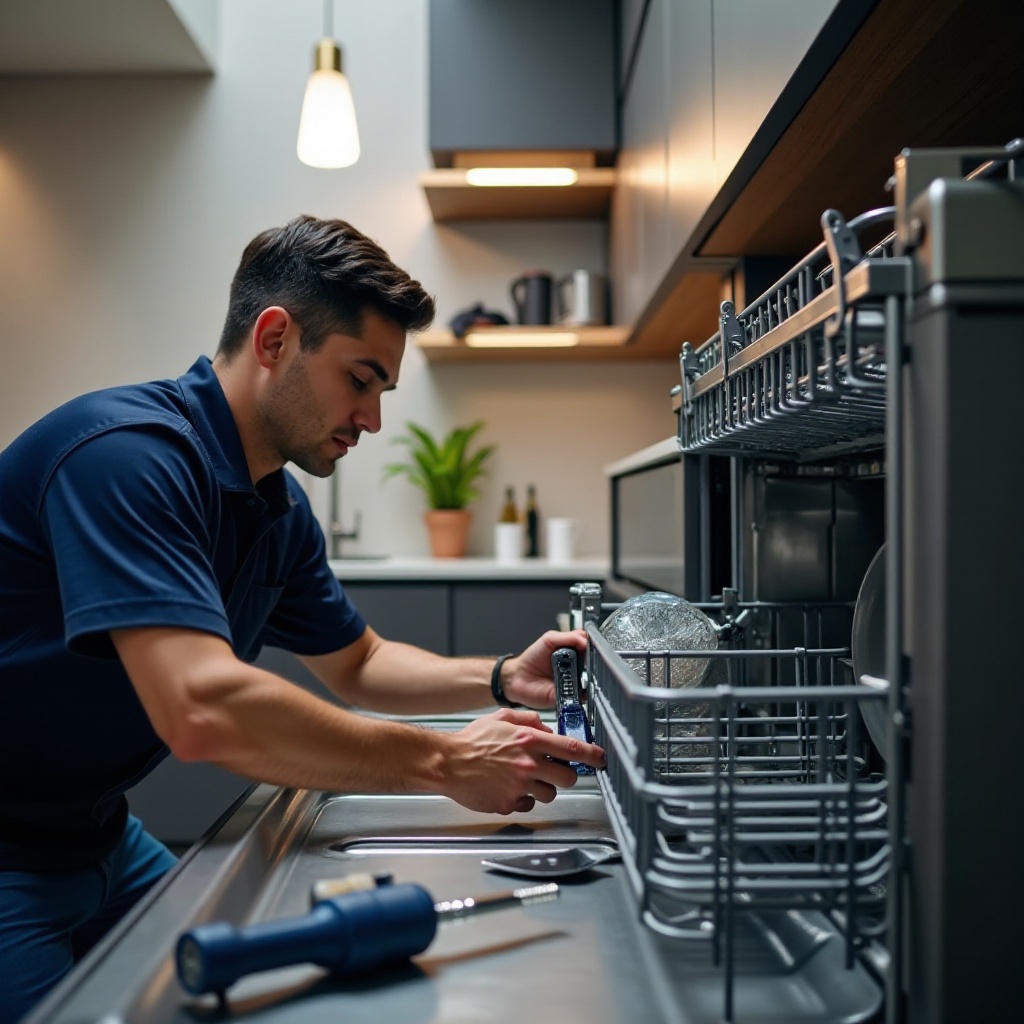Introduction
The dishwasher trap connection is an essential component that prevents wastewater from contaminating your dishwasher. Ensuring a proper connection is crucial to avoid leaks and maintain efficient operation. In this comprehensive guide, we will walk you through the importance of a correct trap connection, preparations, step-by-step installation, maintenance, and troubleshooting tips. By the end of this article, you'll be equipped with the knowledge to handle your dishwasher's trap connection confidently.

Importance of Proper Dishwasher Trap Connection
A well-connected dishwasher trap is vital for several reasons. First and foremost, it helps to keep your kitchen clean and hygienic by preventing backflow of dirty water. An improper connection can lead to leaks, which can cause water damage to your kitchen floor and cabinets. Moreover, a faulty connection can impact the efficiency of your dishwasher, leading to longer cycle times and potential malfunctions.
Understanding the significance of a proper dishwasher trap connection, it becomes evident why meticulous preparation and installation are necessary. Let's explore the necessary preparations before diving into the installation process.
Preparing for Installation
Preparation is key to achieving a successful dishwasher trap connection. Follow these steps to ensure you're ready for installation.
Tools and Materials Needed
Before starting, gather the following tools and materials:- Adjustable wrench- Screwdriver set- Pipe tape- Utility knife- Bucket for catching water- New dishwasher trap
Safety Precautions to Consider
Safety should always be a priority during installation. Here are some precautions to follow:1. Turn off the water supply: Ensure the main water valve is closed to prevent any accidental leaks.2. Disconnect the power: Unplug the dishwasher or switch off the circuit breaker to avoid electrical hazards.3. Wear protective gear: Use gloves and safety glasses to protect against sharp edges and potential debris.
Understanding the Parts: Trap, Drains, and Pipes
Familiarizing yourself with the parts involved is crucial for a smooth installation. The trap is a curved pipe that prevents sewer gases from entering your kitchen. The connection involves the dishwasher drain hose, the trap itself, and the plumbing leading to the sink or garbage disposal. Knowing how each part connects will streamline the installation process.
With your preparations complete, it's time to move on to the step-by-step installation guide.
Step-by-Step Installation Guide
Follow these steps to achieve a secure and leak-free dishwasher trap connection.
Step 1: Turn Off Water Supply
Before beginning the installation, ensure that your kitchen's water supply is turned off to prevent any unwanted spills or leaks.
Step 2: Disconnecting Old Trap (if applicable)
If you're replacing an old trap, start by disconnecting it. Use an adjustable wrench to loosen the nuts holding the trap in place. Be ready with a bucket to catch any residual water that may drain out.
Step 3: Fitting the New Trap
Position the new trap beneath the sink and attach it to the existing plumbing using pipe tape to ensure a tight seal. Make sure the trap's curved section is correctly aligned to prevent wastewater from flowing back into the dishwasher.
Step 4: Connecting to the Dishwasher
Attach the dishwasher drain hose to the trap's inlet. Secure the connection with a clamp to prevent any leaks. Double-check that the hose is not kinked or bent, as this can impede drainage.
Ensuring a Secure Connection
After making all connections, use your adjustable wrench to tighten the nuts and ensure a secure fit. Avoid over-tightening, as this can damage the fittings and create leaks.
Testing for Leaks
Turn on the water supply and run a short dishwasher cycle to test for leaks. Check all connections for any signs of water dripping. If leaks are detected, tighten the fittings as necessary.
With the installation complete, it's important to maintain your trap connection to ensure ongoing efficiency and prevent future issues.

Maintenance and Troubleshooting
Regular maintenance and prompt troubleshooting can help you avoid major problems with your dishwasher trap connection.
Routine Maintenance Tips
- Inspect regularly: Check the connections every few months for signs of wear or leaks.
- Clean the trap: Remove any debris or buildup from the trap to ensure free-flowing drainage.
- Replace worn parts: If you notice any components starting to deteriorate, replace them promptly.
Common Troubleshooting Tips
- Slow drainage: Ensure the trap and hose are clear of blockages. Clean as necessary.
- Leaks: Identify the source of the leak and tighten or replace the affected parts.
- Odors: Clean the trap regularly to prevent the buildup of food particles and bacteria.
When to Call a Professional
If you're unable to resolve issues on your own, it's best to call a professional plumber. Persisting leaks, recurring blockages, or complicated installations may require expert assistance.

Conclusion
By following this guide, you're now well-equipped to handle your dishwasher trap connection with confidence. Proper installation and regular maintenance will ensure a leak-free, efficiently running dishwasher, keeping your kitchen clean and sanitary.
Frequently Asked Questions
How often should I check my dishwasher trap connection?
It's advisable to inspect your dishwasher trap connection every few months for signs of wear or leaks to ensure it remains in good working condition.
What should I do if my dishwasher trap connection is leaking?
If you detect a leak, check the connections and tighten the fittings. Replace any worn-out parts and test for leaks again. If the issue persists, consider calling a professional.
Can I install a dishwasher trap connection myself, or do I need a professional?
With the right tools and instructions, a DIY installation is possible. However, if you're unsure or encounter difficulties, seeking professional help can ensure a proper and secure connection.
